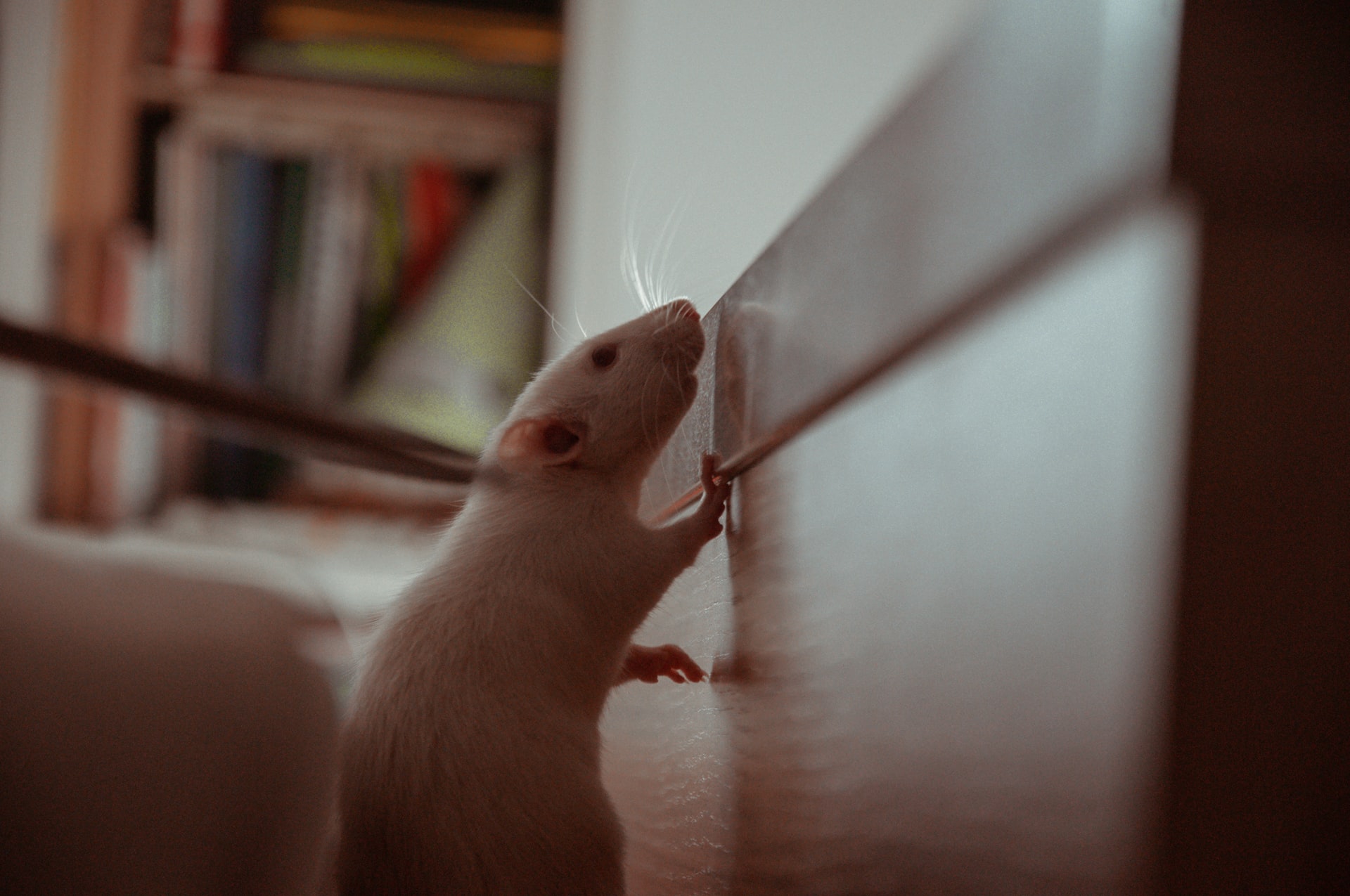Have you wondered: Why do rats need to be controlled? If you notice the signs of a rat infestation, you need to act fast. Find out more about the dangers of rats in your property.
There are many dangers of having a rat infestation. Rats spread diseases, can damage your property, and can even cause your business to be shut by public health officers. Rats move to find a constant source of food, water and shelter.
Our pest control services in Staffordshire regularly help customers deal with rat infestations.
The Dangers of Rats
Rats pose serious risks to both health and property, making swift action essential when an infestation is suspected.
These pests are known carriers of harmful diseases such as leptospirosis, salmonella, and hantavirus, which can spread to humans through their urine, droppings, or bites.
Beyond health hazards, rats cause extensive damage by gnawing on electrical wiring, pipes, insulation, and structural materials, potentially leading to costly repairs or even fires.

Their rapid breeding and ability to hide in small spaces make them difficult to control without professional help, highlighting the importance of early detection and effective pest management.
If you spot any signs of a rat infestation, it is important that you contact The British Pest Control Association. A qualified pest control professional can protect children, pets, your family, your employees and your customers. They will give you advice and safe methods to prevent rats from getting into your house or other buildings.
Pathogens and Disease
Rats like to mark their territory wherever they go. They urinate around the property. This is a concern for public health. Rats carry and spread diseases through urine and droppings that can make humans very ill.
Rats and mice can also carry fleas and other parasites that bite people and animals. Avoid contact with rat droppings and urine. Wear gloves and a mask when you clean.

Main diseases that rats can spread include:
Leptospirosis (also known as Weil's Disease)
Salmonella
Listeria
Toxoplasma Gondii
Hantavirus
Why Rat Numbers Rise
Food, water and shelter
Rat infestations grow when rats can get food, water and shelter. Food waste, open bins and bird feed are common reasons.
Safe places to live
Rats are often found in walls, lofts, basements, under floors, in yards, and in outbuildings such as sheds and garages. Drains and sewers are common access routes for the brown rat.
Easy access
Small holes in the ground, around pipes, or under doors let rodents enter a building. A gap the width of a thumb can be enough for a young rat.
Property Damage
Rats can affect your property by causing structural damage. To keep their teeth in shape, rats gnaw on many things, including electrical wires, furniture and pipes. Gnawing on wires can cause a fire risk. Gnawing on pipes can cause gas and water leaks. Rats will also gnaw wood, plastic and soft metals. Over time this damage can weaken buildings and sheds.
Rats in your Businesses
Under the Prevention of Damage by Pests Act 1949, it is a legal duty in the uk to keep rodents out of premises. If you have a rat problem that risks people’s health or property, you must report it to the local authority. A rat infestation can harm your reputation and lead to closure. This is why clear pest control procedures are important in any building that stores, prepares or serves food.
Rats in your Home
Having rats and mice in your home brings health risks. They can damage clothing, furniture, wiring and pipes. They may also spoil food. A clean and tidy home reduces the risk, but you still need to remove access and hiding places.
The Signs of Rat Infestation
There are many signs that you have a rat infestation, and you must look out for them.
If you do spot any of the following signs, please get in touch with a professional pest controller today:

Rat's Teeth Marks
Rats love gnawing. You may see gnawing on wires, wood, plastic, doors and skirting.
Scratching and movement
You may hear scratching in the walls and ceilings at night when rats are most active.
Holes and access points
Rats enter through holes in the walls or the ground. Small holes with fine smear marks can be mice. Larger holes, often with gnawing, can be rats.
Footprints and tail marks
In dusty places you may see tracks and a tail line. These are often found behind appliances or along edges.
Rub Marks
Grease from fur leaves dark rub marks along routes. This can help you spot where rodents travel..
Foul Smell
A strong, musky smell can be a sign of nests, urine or a dead rat.
Puddles of Urine
Small wet patches with a strong odour are a warning.
Rat droppings
Rat droppings are olive shaped with blunt ends. Mice droppings are smaller with a pointy end. The number of droppings can show how active the infestation is.
Common Places Rats Are Often Found
Under decking, sheds and outbuildings
Along fence lines and walls in yards and gardens
In voids beneath floors and behind kickboards
In lofts and cavity walls
In garages and bin stores
In drains, around broken covers and at pipe entries
Keeping Rats Out
Food Sources
Rats cannot survive without food and water, so if you are giving them a constant source by leaving food waste in bins or out in the open around your home, then you are giving the rats something to feed themselves and their families with. To avoid this problem, ensure to store all your food in containers.
Water
Fix dripping taps and leaking pipes. Check outdoor water butts have tight lids. Ensure drains and gullies are clear and in good repair.

Shelter
Rats can find shelter inside and outside buildings. For example, a messy shed with boxes is ideal. Keep homes and outbuildings clean and tidy. Raise stored items off the ground. Remove clutter where rats can live.
Openings and Access
Keep doors closed when not in use. Fit bristle strips to the bottom of external doors. Use metal mesh to seal holes around pipes and vents. Cover air bricks with rodent-proof grilles that still allow airflow. Ensure drains are fastened tightly. Consider a one-way rat flap in the sewer if advised by a professional.
Landscape and Outside Areas
Cut back dense plants near the building. Lift and store firewood away from walls. Keep grass short in the area near the home. Do not leave bird feed on the ground. Use feeders with trays and clear up fallen seed.
Getting Rid of Rats
There are two common ways of getting rid of a rat problem that the BPCA approves. Before you try these, contact a professional as soon as possible. Professional pest control will assess the area, choose the right method, and ensure the safety of people and pets.
Traps
Use quality snap traps and place them along walls where rats travel. Bait the traps. Traps are often safer than poison, especially where there are children or pets. Check traps often and remove caught animals promptly and safely.

Poison
Common rat poisons include warfarin, chlorophacinone and pival. Only use poison as directed on the label. Place bait in tamper-resistant boxes in dark places, for example behind boards or near runs. Keep poison away from pets, non-target animals and children. When you are sure all rats have gone, remove all bait and dispose of it as instructed.
Important: Never place poison loose. Never use it where animals or people can touch it. If in doubt, ask a professional.
Cleaning After an Infestation
Wear gloves and a mask.
Do not sweep dry droppings. Dampen with disinfectant first.
Double-bag waste.
Wash hands well after contact with any area rats used.
Clean food preparation areas before use.
Keeping Rats Under Control
Rat control, and other rodent control, is essential to protect your home and property. To control rats, remove access to food, water and shelter. Seal entry holes.
Use traps or professional help to get rid of active rats. If you see any signs of a rat infestation, contact your local pest control service. Acting in time will prevent further damage and reduce risk to people, pets and buildings in your area.
How to Prevent Rat Infestations Long Term
Seal all holes and gaps larger than a pencil.
Fit covers and guards on drains and air bricks.
Store food and pet feed in sealed tubs.
Keep the kitchen, bin store and yards clean and tidy.
Maintain a regular check for new signs, such as droppings or gnawing.
Work with a professional to control rats in complex buildings.
Why do Rats need to be Controlled: Frequently Asked Questions
Yes. Rats carry diseases that can harm humans and animals. There is also a fire risk from gnawing on wires.
The brown rat is the most common species. It is also called the Norway rat.
Rats often live in groups. If you see one rat, there may be more nearby.
Rats can get in through small holes, broken drains, gaps under doors, or by climbing rough walls and pipes.
You can try traps. Use poison only with great care. For larger infestations you should use professional pest control.
Are you looking for rat pest control?
Do you have a rat problem in Burton upon Trent or Staffordshire?
If you would like to find out more information about the rat pest control services we offer follow the link below.
Rat Pest Control

